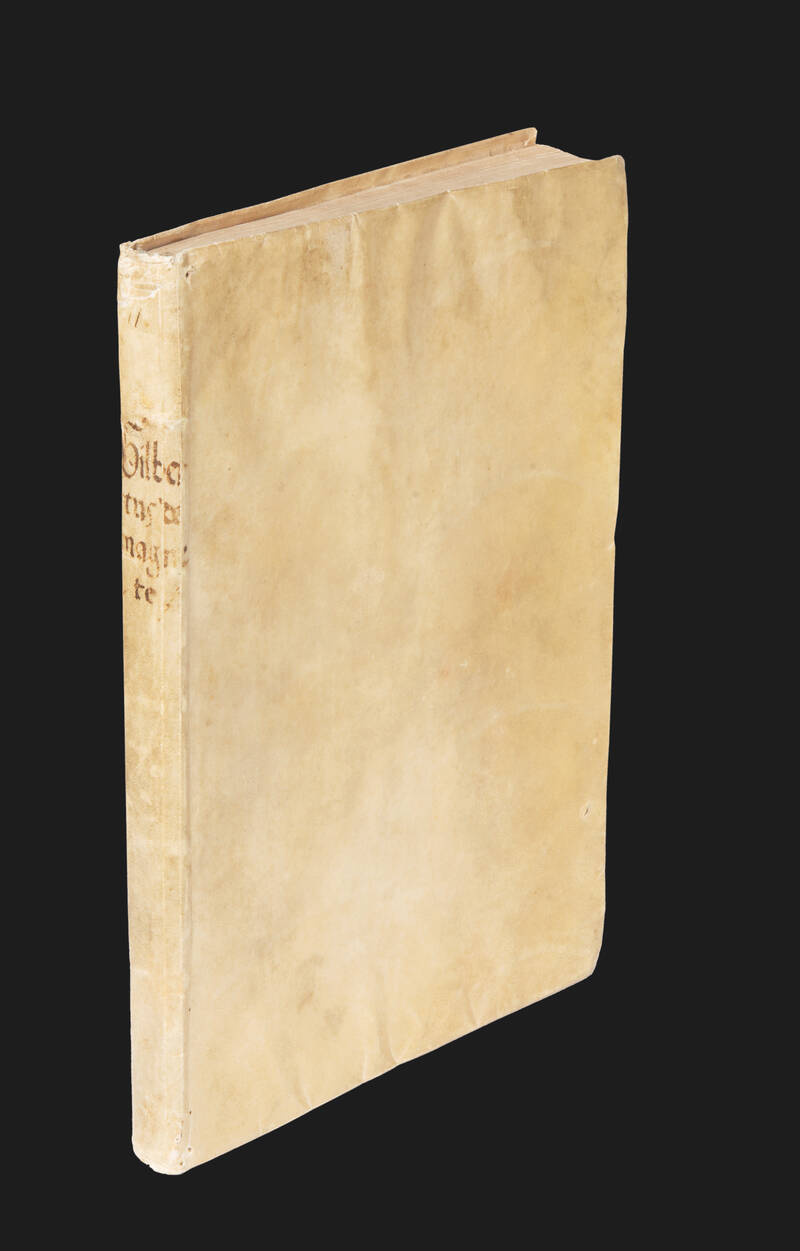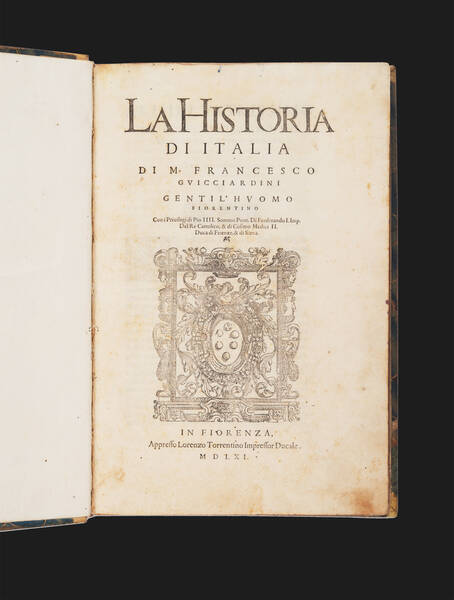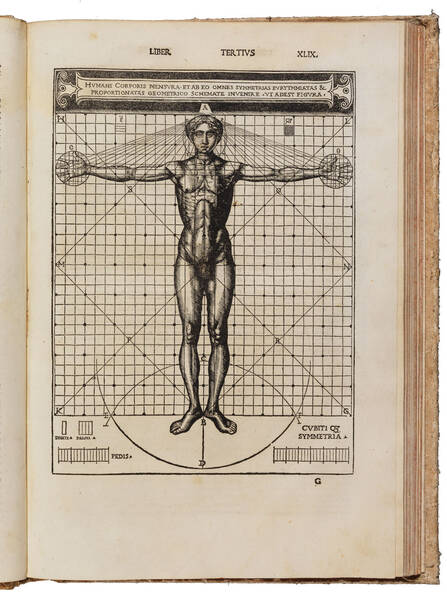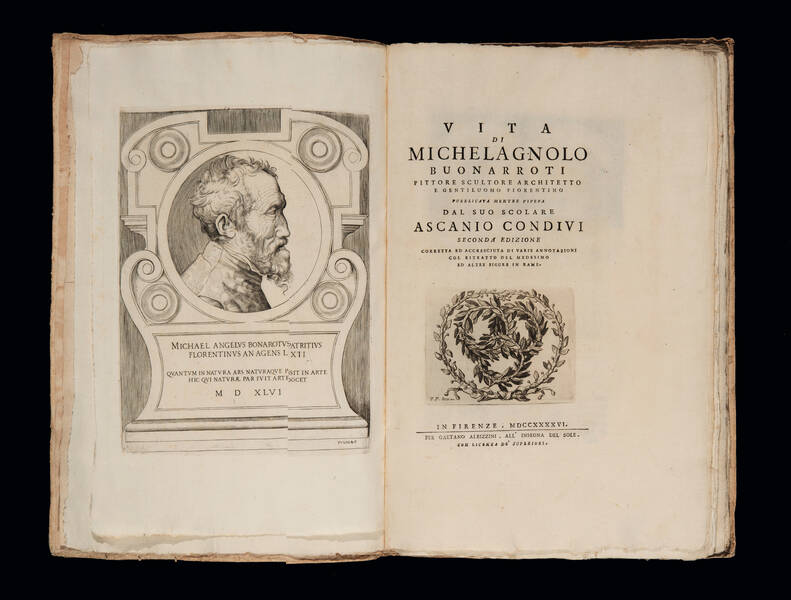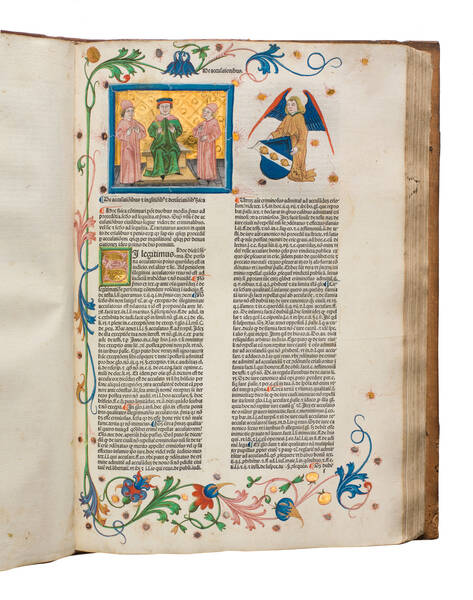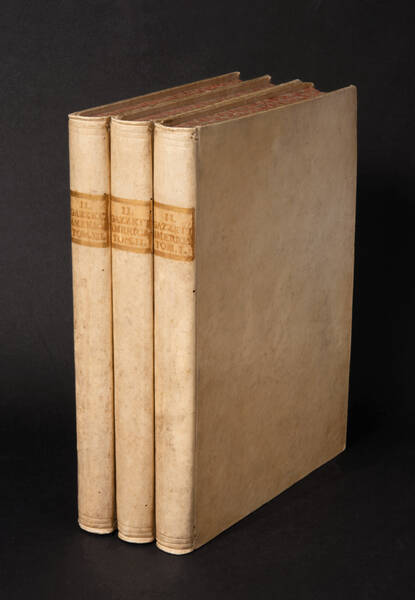GILBERT, William. De magnete, magneticisque corporibus, et de magno magnete tellure; Physiologia nova, plurimis & argumentis, & experimentis demonstrata.
London, P. Short., 1600.Folio (288 x 190mm). Woodcut printer's device on title with Gilbert's arms on verso; folding woodcut diagram; woodcut illustrations in text. Occasional spots, neat repair to fold of folding plate, a blank lower corner of one leaf reattached; a very fine copy in contemporary limp vellum, title in ink on spine (lacking ties, neat repairs to headcap); custom box. Provenance: armorial stamp on title verso – Kenneth E. Hill (bookplate).
First edition of the first major English treatise based on experimental methods; the first scientific treatise on electricity and magnetism.'The magnetic proprieties of the lodestone were known in ancient Greece, but it was only in the late Middle Ages that knowledge of the magnetic spread to Europe from China, where also the mysteries of magnetism had long been studied. But it was with Gilbert, who was physician to Queen Elizabeth I, that the modern development of electricity and magnetism really starts. His book ‘On the Magnet' was the first major English scientific treatise based on experimental method of research. Gilbert was chiefly concerned with magnetism; but as a digression he discussses, in his second book, the attractive effect of amber (electrum), and thus may be regarded as the founder of electrical science. He coined the terms ‘electricity', ‘electric force' and ‘electrict attraction'. His ‘versorium', a short needle balanced on a sharp point to enable it to move freely is the first instrument designed for the study of electrical phenomena, serving both as an electroscope and electrometer. He contended that the earth is a great magnet; he distinguished magnetic mass from weight; and he worked on the application of terrestrial magnetism to navigation. Gilbert's book influenced Kepler, Bacon, Boyle, Newton and, in particular, Galileo who used his theories to support his own proof of the correctnees of the findings of Copernicus in cosmology. It was printed eleven times, four in Latin, six in English and once in Russian'. (PMM)
Norman 905; PMM 107; STC 11883; Wellcome 2830.
Other Books
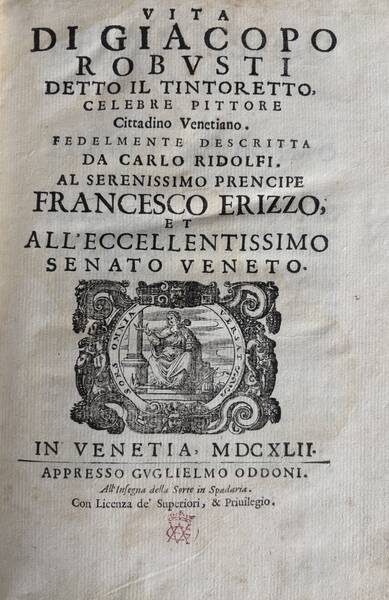
RIDOLFI, Carlo
Vita di Giacopo Robusti detto il Tintoretto, celebre pittore, cittadino venetiano.
€ 2.500![[De Architectura libri decem], M. Vitruuius per Iocundum solito castigatior factus cum figuris et tabula vt iam legi et intelligi possit. [De Architectura libri decem], M. Vitruuius per Iocundum solito castigatior factus cum figuris et tabula vt iam legi et intelligi possit.](https://www.medariquier.com/typo3temp/pics/b57e48f107.jpg)
VITRUVIUS POLLIO, Marcus
[De Architectura libri decem], M. Vitruuius per Iocundum solito castigatior factus cum figuris et tabula vt iam legi et intelligi possit.
SOLD OUT
MANZONI, Alessandro
I promessi sposi, storia milanese del secolo XVII scoperta e rifatta da Alessandro Manzoni.
€ 11.500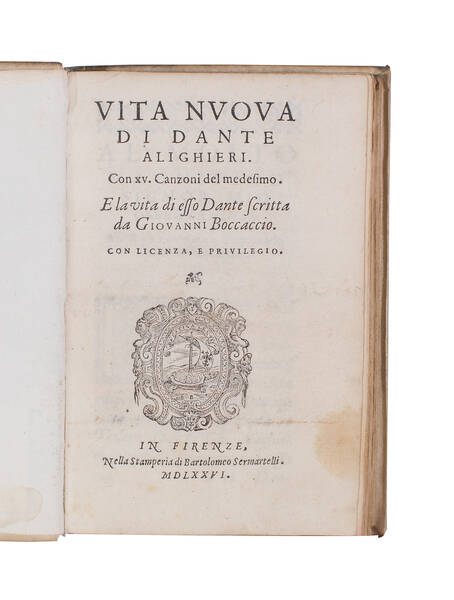
ALIGHIERI, Dante
Vita nuoua di Dante Alighieri. Con XV canzoni del medesimo. E la vita di esso Dante scritta da Giouanni Boccaccio
SOLD OUT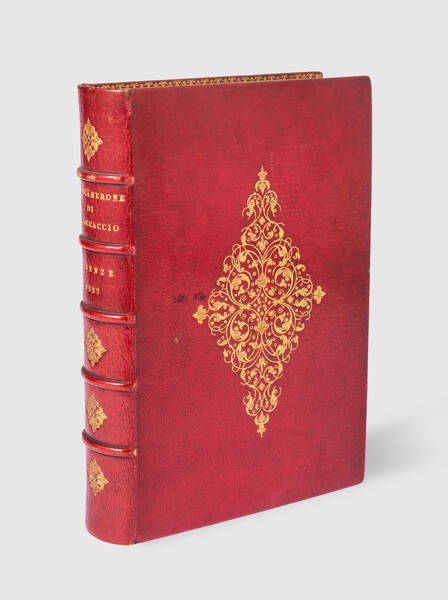
BOCCACCIO, Giovanni
Il Decamerone di m. Giouanni Boccaccio nuouamente corretto et con diligentia stampato.
SOLD OUT![MORE, Sir Thomas. De optimo reip. statu deque nova insula Utopia ... Epigrammata [with:]DESIDERIUS ERASMUS. Epigrammata. MORE, Sir Thomas. De optimo reip. statu deque nova insula Utopia ... Epigrammata [with:]DESIDERIUS ERASMUS. Epigrammata.](https://www.medariquier.com/typo3temp/pics/9344bb41f5.jpg)
MORE, Sir Thomas; DESIDERIUS ERASMUS
MORE, Sir Thomas. De optimo reip. statu deque nova insula Utopia ... Epigrammata [with:] DESIDERIUS ERASMUS. Epigrammata.
€ 50.000
ARIOSTO, Ludovico
Orlando Furioso di M. Ludovico Ariosto novissimamente alla sua integrità ridotto et di varie figure ornato.
SOLD OUT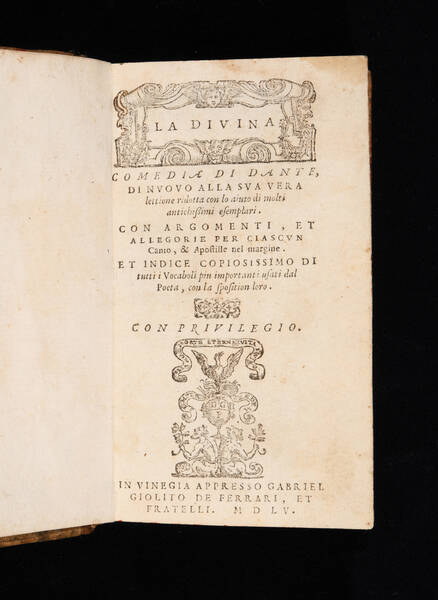
ALIGHIERI, Dante
La Diuina Comedia di Dante, di nuouo alla sua vera lettione ridotta con lo aiuto di molti antichissimi esemplari. Con argomenti, et allegorie per...
SOLD OUT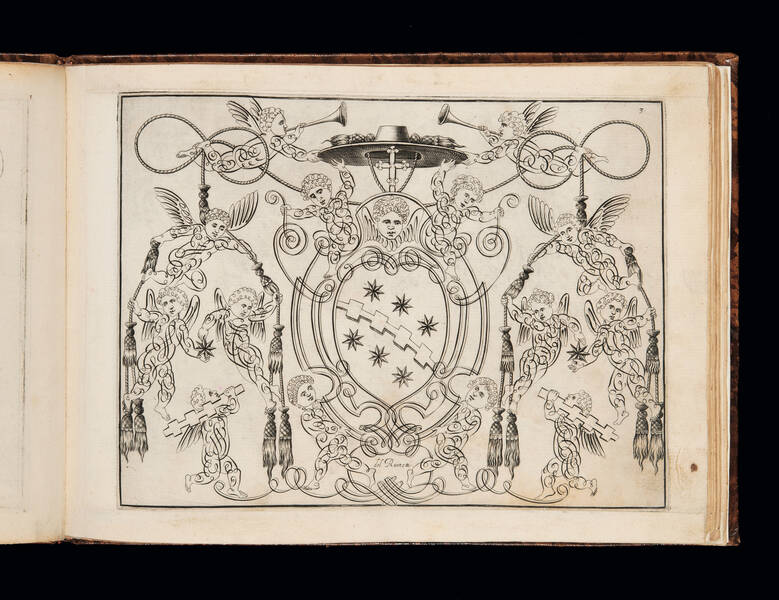
RUINETTI, Tomaso
Idea del buon scrittore, opera prima di Tomaso Ruinetti da Ravena a’beneficio de’desiderosi d’imitare le vere forme dello scrivere.
€ 8.000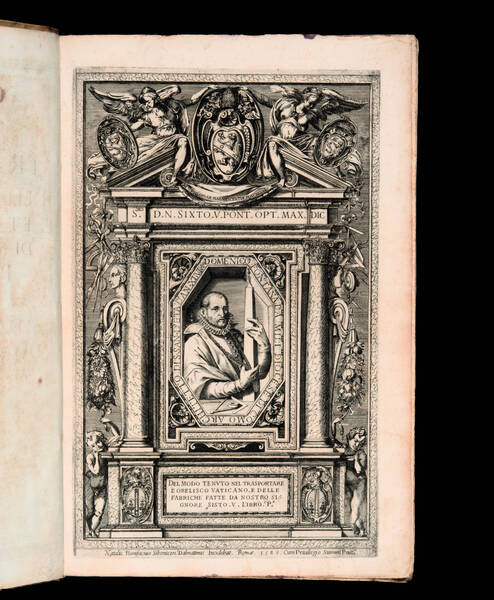
FONTANA, Domenico
Della trasportatione dell'obelisco vaticano et delle fabriche di nostro signore papa Sisto V fatte dal cauallier Domenico Fontana architetto di sua...
SOLD OUT
ALIGHIERI, Dante
Commedia di Dante insieme con vno dialogo circa el sito forma et misure dello Inferno.
SOLD OUT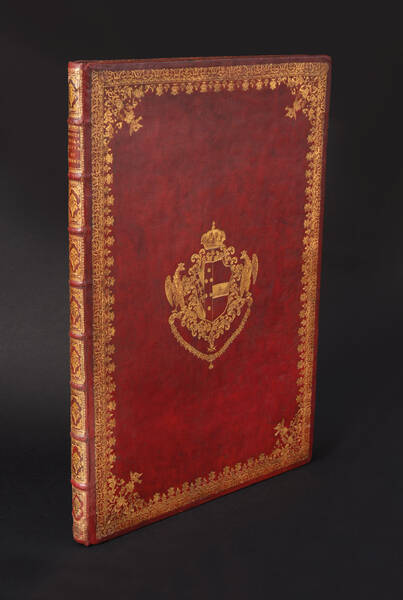
ZOCCHI, Giuseppe
Scelta di XXIV vedute delle principali contrade, piazze, chiese, e palazzi della citta di Firenze.
€ 45.000MEDA RIQUIER rare books ltd.
4 Bury Street St James's
SW1Y 6AB London
Phone +44 (0) 7770457377
info@medariquier.com
